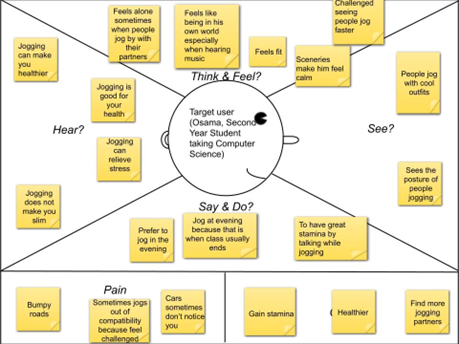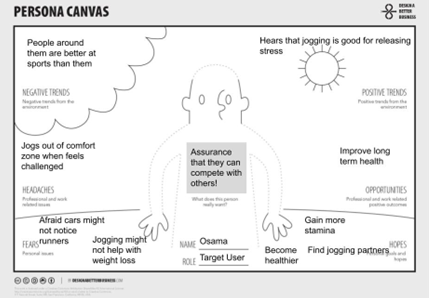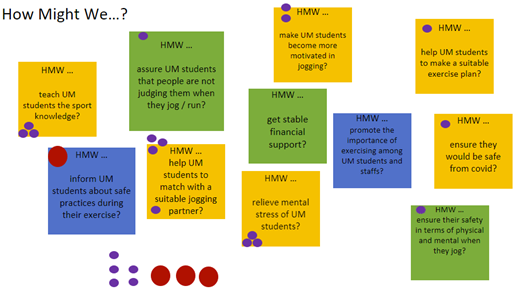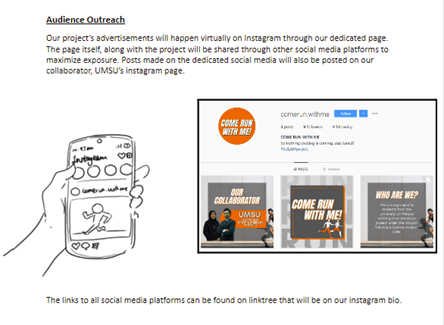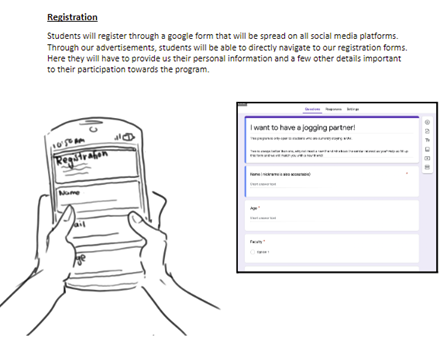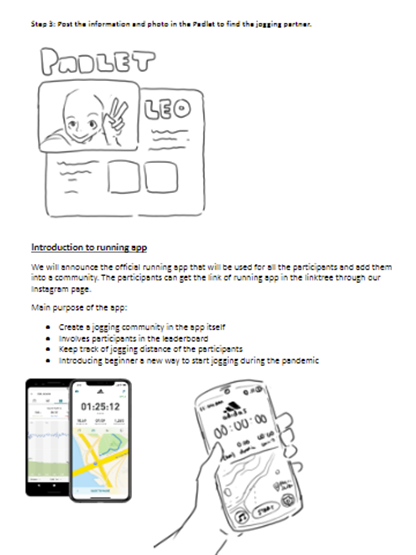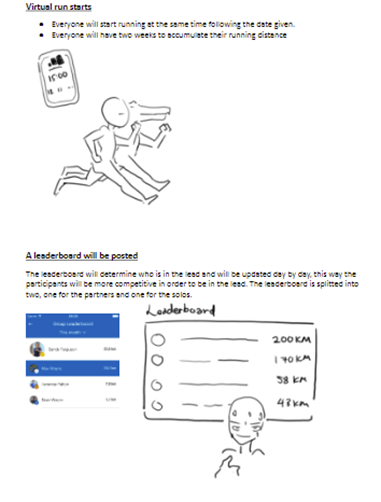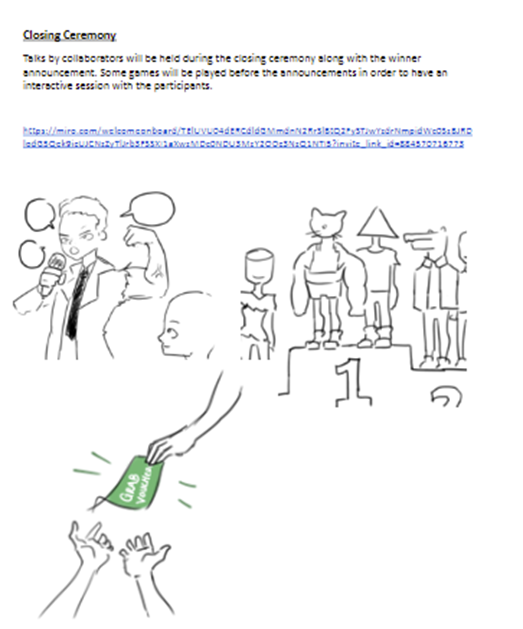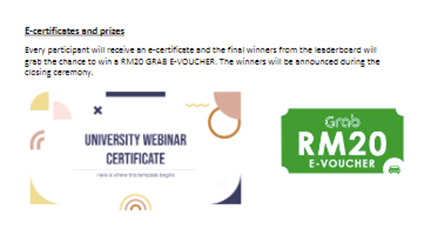
Description of the course
The course builds effective communication and critical thinking skills. Topics related to communication include verbal and non-verbal communication skills, listening skills, presentation skills, persuasive language skills and analysis of barriers to communication. In terms of barriers for communication, topics include techniques for clarifying, analyzing and evaluating arguments and logical fallacies, problem solving and decision making. The course further focuses on methods for finding, evaluating and using information sources effectively. The course builds individual, leadership and teamwork skills.
Description of the participants
The course targets students enrolled in the 2nd year of the Bachelor of Computer Science program. In semester 1 of the 2021 – 2022 academic years 392 students attended the course, of which 49 participated in the design thinking intervention. The course took place virtually.
Students who attended the course were registered in their second year of the Bachelor of Computer Science program. A total of 392 students enrolled in the course in Semester 1 of 2021-22 of which 49 students participated in the Design Thinking intervention. The course was conducted fully online during the Covid-19 pandemic. The student body was multicultural, with individuals originating from China, the United Kingdom, Bangladesh and Malaysia.
Description of gamified design thinking activities
Students were expected to implement a project that benefits a community of choice. The project is titled Service-Learning Malaysia-University for Society. It constitutes a learning method focused towards providing students the opportunity to contribute knowledge, skills and competencies in their field towards solving problems or issues within communities. It is one of the initiatives of higher education in Malaysia aimed towards producing graduates who are holistic and balanced and possess an entrepreneurial mindset. The service learning project is also one of the elements that characterizes high impact educational practices within the curriculum. It follows an initiative introduced by the Ministry of Higher Education in 2016.
The students participated in weekly meetings. At the beginning of each class the course coordinator provided a 30-minute briefing on a specific design thinking stage. Students met their team members via a private channel created in their first class and worked with the group throughout the course. Students attended the course from their own homes using their own workstation or laptop connected to the internet to participate in weekly group discussions. They used the MSTeams® platform for communication and sharing of material. Examples of the materials shared include lecture notes on design thinking, exercise activity sheets and templates for each phase of the design thinking framework.
A total of 49 students engaged in the design thinking intervention. They were divided into 8 teams. Teams were tasked to complete an assignment that had a duration of 14 weeks, namely the entire semester, by applying design thinking steps. Each team implemented a different project, resulting into 8 projects. At the beginning of the course, students were given a general problem statement, namely in what ways can we support a community for better quality of life post COVID-19 across different domains, such as education, tourism, health, business and others. They were allowed to further specialize their project topic. Each week students brainstormed on different design thinking activities, such as empathy, ideation, prototyping and testing.
Student activities were organized into the steps below. In the example provided, the project focuses on finding a jogging partner during endemic COVID-19.
Step 1: Finding a collaborator and problem discovery.
The objective of the activity was to identify what is important to the collaborator and end-user.
Students participated in a discussion within their group. They identified a list of potential collaborators who were representative of target users and chose a domain according to the team’s interest where each member produced several ideas and options. Teams setup a virtual meeting with their collaborator of choice. During the meeting, team members conducted an interview in an informal setting, such as a chat. The goal of this meeting was to understand what matters were important to the collaborator with respect to the topic in focus. Prior to the team’s meeting with the collaborator, the students were asked to prepare an interview script, namely a list of potential open-ended questions, that they would like to ask the collaborator during the virtual meeting.
Step 2: Empathy.
Students were challenged to put themselves into the shoes of the end user in order to understand the user’s challenges, experiences and motivation. Students achieved this goal through interviews. Based on the information collected, students created an empathy map and a user persona that described a characteristic user of the selected target group.
Step 3: Problem definition.
Students were encouraged to produce meaningful problem statements. They synthesized their observations gathered in previous steps. Students created a wall of ides from the empathy map generated in the previous step. They grouped their ideas into themes using an affinity diagram, which is a visual representation of relationships between complex and large ideas. They created a point of view statement that represented the empathy map. The point of view statement reframed the design challenge into an actionable problem.
Each team created several problem statements, one for each type of end user. They then produced a list of “how might we” questions. Team members voted on the topic of their choice. This resulted into a single problem statement that was the result of team consensus for future implementation.
Step 4: Ideation. How can a team have a million ideas?
Students completed the ideation sprint exercise from Mural® (www.mural.co). Team members participated in several rounds of ideation. They were told that the goal of the activity was to generate as many ideas as possible, or go for quantity, during 4 rounds of ideation. Students were instructed to build on the ideas of others, to stay on topic, to defer judgement and to welcome wild ideas.
Step 5: Prototyping. How innovative can one get?
The facilitator shared several types of prototypes. Each team was asked to identify the most suitable prototype medium for implementation depending on the type of solution the team developed, for example services or products. Some examples of potential media for prototyping include sketches and diagrams, paper interface, storyboards, Lego® constructions, role playing and physical models. Each of these media is more suitable for a different type of prototype implementation. Students were provided with recommendations on selecting a suitable medium for prototyping based on the type of solution their decided to develop.
- For services, the facilitator recommended as potential types of prototypes role playing, video, storyline and flyer.
- For products, cardboard models, Playdoh® and more.
- For digital services and products, paper sketchers, apps and mockups.
Following are some screenshots of an example project, in which the team used storyboards and sketches for prototyping.
